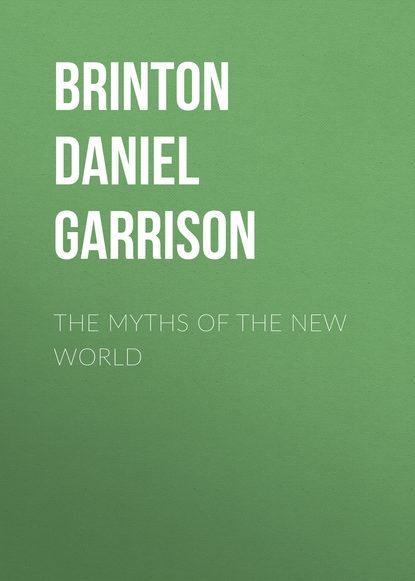По всем вопросам обращайтесь на: info@litportal.ru
(©) 2003-2024.
✖
The Myths of the New World
Настройки чтения
Размер шрифта
Высота строк
Поля
Of very many authorities that I have at hand, I shall only mention Heckewelder, Acc. of theInds. p. 422, Duponceau, Mém. sur les Langues de l’Amér. du Nord, p. 310, Peter Martyr De Rebus Oceanicis, Dec. i., cap. 9, Molina, Hist. of Chili, ii. p. 75, Ximenes, Origen de los Indios de Guatemala, pp. 4, 5, Ixtlilxochitl, Rel. des Conq. du Mexique, p. 2. These terms bear the severest scrutiny. The Aztec appellation of the Supreme Being Tloque nahuaque is compounded of tloc, together, with, and nahuac, at, by, with, with possessive forms added, giving the signification, Lord of all existence and coexistence (alles Mitseyns und alles Beiseyns, bei welchem das Seyn aller Dinge ist. Buschmann, Ueber die Aztekischen Ortsnamen, p. 642). The Algonkin term Kittanittowit is derived from kitta, great, manito, spirit, wit, an adjective termination indicating a mode of existence, and means the Great Living Spirit (Duponceau, u. s.). Both these terms are undoubtedly of native origin. In the Quiche legends the Supreme Being is called Bitol, the substantive form of bit, to make pottery, to form, and Tzakol, substantive form of tzak, to build, the Creator, the Constructor. The Arowacks of Guyana applied the term Aluberi to their highest conception of a first cause, from the verbal form alin, he who makes (Martius, Ethnographie und Sprachenkunde Amerika’s, i. p. 696).
55
Geschichte der Amerikanischen Urreligionen, p. 403.
56
Bruyas, Rad. Verb. Iroquæorum, p. 38.
57
Alcazar, Chrono-historia de la Prov. de Toledo, Dec. iii., Año viii., cap. iv: Madrid, 1710. This rare work contains the only faithful copies of Father Rogel’s letters extant. Mr. Shea, in his History of Catholic Missions, calls him erroneously Roger.
58
It is fully analyzed by Duponceau, Langues de l’Amérique du Nord, p. 309.
59
Discourse on the Religion of the Ind. Tribes of N. Am., p. 252 in the Trans. N. Y. Hist. Soc.
60
Mueller, Amer. Urreligionen, pp. 265, 272, 274. Well may he remark: “The dualism is not very striking among these tribes;” as a few pages previous he says of the Caribs, “The dualism of gods is anything but rigidly observed. The good gods do more evil than good. Fear is the ruling religious sentiment.” To such a lame conclusion do these venerable prepossessions lead. “Grau ist alle Theorie.”
61
Loskiel, Ges. der Miss. der evang. Brueder, p. 46.
62
Whipple, Report on the Ind. Tribes, p. 33: Washington, 1855. Pacific Railroad Docs.
63
Schoolcraft, Indian Tribes, i. p. 359.
64
In Schoolcraft, Ibid., iv. p. 642.
65
Or more exactly, the Beautiful Spirit, the Ugly Spirit. In Onondaga the radicals are onigonra, spirit, hio beautiful, ahetken ugly. Dictionnaire Français-Onontagué, édité par Jean-Marie Shea: New York, 1859.
66
Squier, The Serpent Symbol in America.
67
Both these legends will be analyzed in a subsequent chapter, and an attempt made not only to restore them their primitive form, but to explain their meaning.
68
Compare the translation and remarks of Ximenes, Or. de los Indios de Guat., p. 76, with those of Brasseur, Le Livre Sacré des Quichés, p. 189.
69
Buckingham Smith, Gram. Notices of the Heve Language, p. 26 (Shea’s Lib. Am. Linguistics).
70
I refer to the four “ultimate elementary particles” of Empedocles. The number was sacred to Hermes, and lay at the root of the physical philosophy of Pythagoras. The quotation in the text is from the “Golden Verses,” given in Passow’s lexicon under the word τετρακτὺς: ναι μα τον ἁμετερᾳ ψυχᾳ παραδοντα τετρακτυν, παγαν αεναου φυσεως “The most sacred of all things,” said this famous teacher, “is Number; and next to it, that which gives Names;” a truth that the lapse of three thousand years is just enabling us to appreciate.
71
Ximenes, Or. de los Indios, etc., p. 5.
72
See Sepp, Heidenthum und dessen Bedeutung für das Christenthum, i. p. 464 sqq., a work full of learning, but written in the wildest vein of Joseph de Maistre’s school of Romanizing mythology.
73
Brasseur, Hist. du Mexique, ii. p. 227, Le Livre Sacré des Quichés, introd. p. ccxlii. The four provinces of Peru were Anti, Cunti, Chincha, and Colla. The meaning of these names has been lost, but to repeat them, says La Vega, was the same as to use our words, east, west, north, and south (Hist. des Incas, lib. ii. cap. 11).
74
Humboldt, Polit. Essay on New Spain, ii. p. 44.
75
This custom has been often mentioned among the Iroquois. Algonkins, Dakotas, Creeks, Natchez, Araucanians, and other tribes. Nuttall points out its recurrence among the Tartars of Siberia also. (Travels, p. 175.)
76
Schoolcraft, Indian Tribes, v. pp. 424 et seq.
77
Letters on the North American Indians, vol. i., Letter 22.
78
Schoolcraft, Indian Tribes, iv. p. 643 sq. “Four is their sacred number,” says Mr. Pond (p. 646). Their neighbors, the Pawnees, though not the most remote affinity can be detected between their languages, coincide with them in this sacred number, and distinctly identified it with the cardinal points. See De Smet, Oregon Missions, pp. 360, 361.
79











